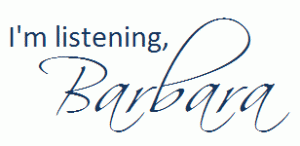 In our PR Applications classes (COMM 2322 at Southeastern University), we’ll all blog about the same general topic each week during the semester. Your TOWs of 300 words or more should be posted by Saturday at midnight at the end of each week.
In our PR Applications classes (COMM 2322 at Southeastern University), we’ll all blog about the same general topic each week during the semester. Your TOWs of 300 words or more should be posted by Saturday at midnight at the end of each week.
If you are unsure how to get started writing these TOWs, many times you can use this three-pronged approach:
- What did you learn?
- What surprised you?
- What do you want to know more about?
WEEK ONE
- Using the three-pronged approach (above), what are your reactions to the NewsU Course you took on Understanding Media: Processes and Principles? (NOTE: You can post this week’s entry as late as Week Three, as you will not be creating your blogs until that time.)
WEEK TWO
- What is a “public”? Which publics are you a member of? How did you choose to become a member of those publics? (Choose and discuss at least three.) (NOTE: You can post this week’s entry as late as Week Three, as you will not be creating your blogs until that time.)
WEEK THREE
- Why are comments such an integral part of blogs? What advice would you offer on writing effective blog comments?
WEEK FOUR
- If you could work in an era of PR history (from a time before you were born), which one would it be? What interests you most about this era and why?
WEEK FIVE
- Based on what you read in Chapter 4 of your Public Relations Strategies & Tactics book, do you think it’s more beneficial for a new PR practitioner to begin his/her career in a PR department or in a PR firm? What are the advantages and disadvantages of each? (NOTE: It is acceptable for you to write this TOW and post it during Week Six, after we discuss departments and firms.)
WEEK SIX
- One Week of Twitter (NOTE: You will do your One Week of Twitter experience mostly during Week Five, then write about it during Week Six.)
WEEK SEVEN
- What advice would you offer to a student who is working on a resume or preparing for a job interview? Be sure to share links to three or more sites / blog posts that would be helpful for a PR student.
WEEK EIGHT
- Using the three-pronged approach (above), what are your reactions to the NewsU Course you took on Online Media Law: The Basics for Bloggers and Other Publishers earlier this semester?
WEEK NINE
- Complete another NewsU course of your choice that you think would be beneficial for a public relations practitioner. What are your reactions to this course? Would you recommend it to other Journalism/PR students at Southeastern University? Why or why not? (Remember to name and link to the specific course you took. Also, submit your Course Report for the course.)
WEEK TEN
- Watch my interview with Martin Waxman. Use the three-pronged approach (described above) to react to the interview.
OR
- Watch my interview with Kneale Mann. Use the three-pronged approach (described above) to react to the interview.
WEEK ELEVEN
- Listen to at least one hour of PR/marketing podcasts (such as For Immediate Release, Inside PR, The Creative Career, Coming Up PR, Trafcom News or Marketing Over Coffee). Briefly summarize what you heard. Discuss how listening to PR podcasts can benefit PR students or new PR practitioners. (Optional: Also, write a short review of the podcast at iTunes.)
WEEK 12
- Based on what you learned in this week’s class discussions and lecture on Public Relations During Times of Crisis, write a blog post about some aspect of crisis communication.
WEEK 13
- Public relations practitioners often use news releases to get their clients into the news. Provide 10 tips for writing an effective news release. (Be sure to link to at least two sources for your information.)





 As our semester begins at Georgia Southern, students are asking me questions via e-mail about our online classes. Rather than responding individually (so only one student can benefit), I’ve created a list of FAQs so that all can benefit.
As our semester begins at Georgia Southern, students are asking me questions via e-mail about our online classes. Rather than responding individually (so only one student can benefit), I’ve created a list of FAQs so that all can benefit.


